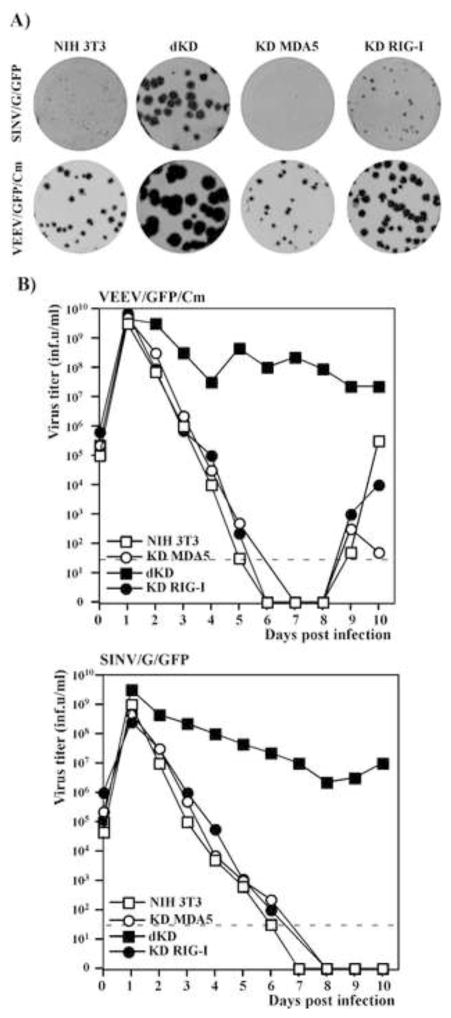Fig. 4.
Single PRR KD cells are capable of both downregulating the spread of mutant alphaviruses and inhibiting already established virus replication. (A) NIH 3T3, KD RIG-I, KD MDA5 and dKD cells were seeded into 6-well Costar plates at a concentration of 5×105 cells per well. SINV/G/GFP and VEEV/GFP/Cm virus stocks were serially diluted and used for infection of the indicated cells with different numbers of infectious units. After 1-h-long incubation at 37°C, the virus-containing media were replaced with 2 ml of media supplemented with 0.6% agarose. After incubation at 37°C for 48 h, cells were fixed, and plates were scanned on a Typhoon imager to enumerate and assess foci of GFP-expressing cells. Images represent wells infected with the same numbers of infectious units. (B) Subconfluent monolayers of NIH 3T3, KD RIG-I, KD MDA5 and dKD cells were infected with SINV/G/GFP and VEEV/GFP/Cm at an MOI of 20 PFU/cell. Media were replaced every day and cells were split upon reaching confluency, usually every 24 hours. Virus titers in harvested media were determined by plaque assay on BHK-21 cells. Dashed lines represent the limits of detection. This experiment was repeated twice with similar results.

